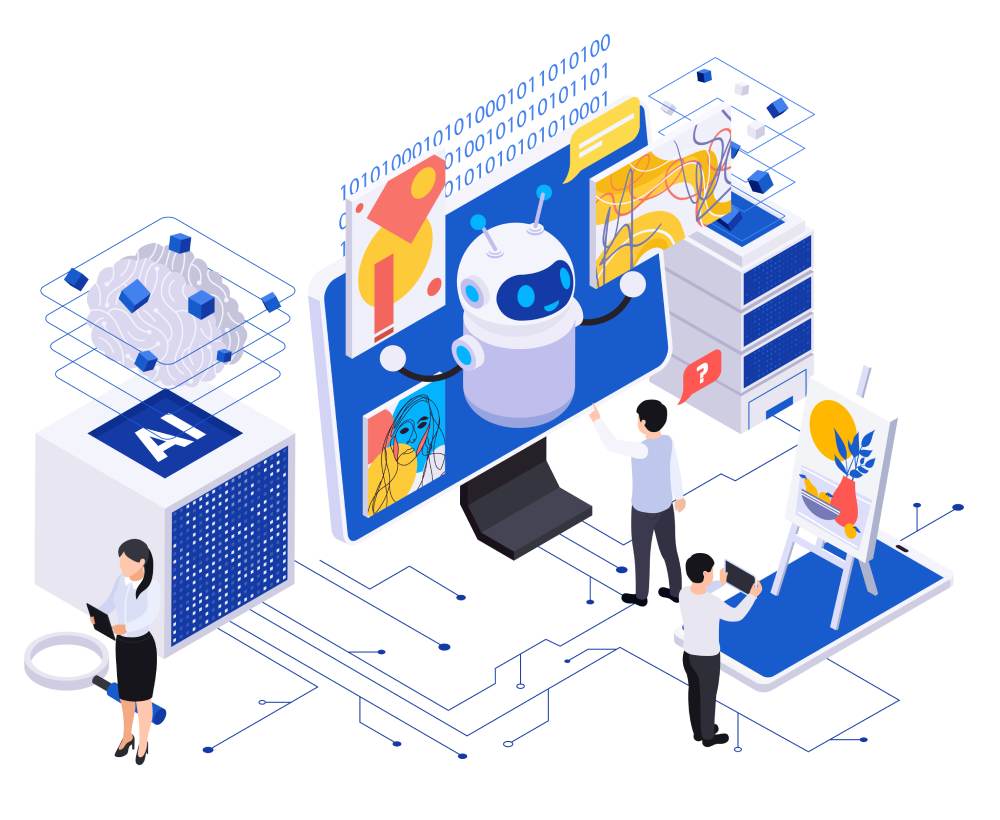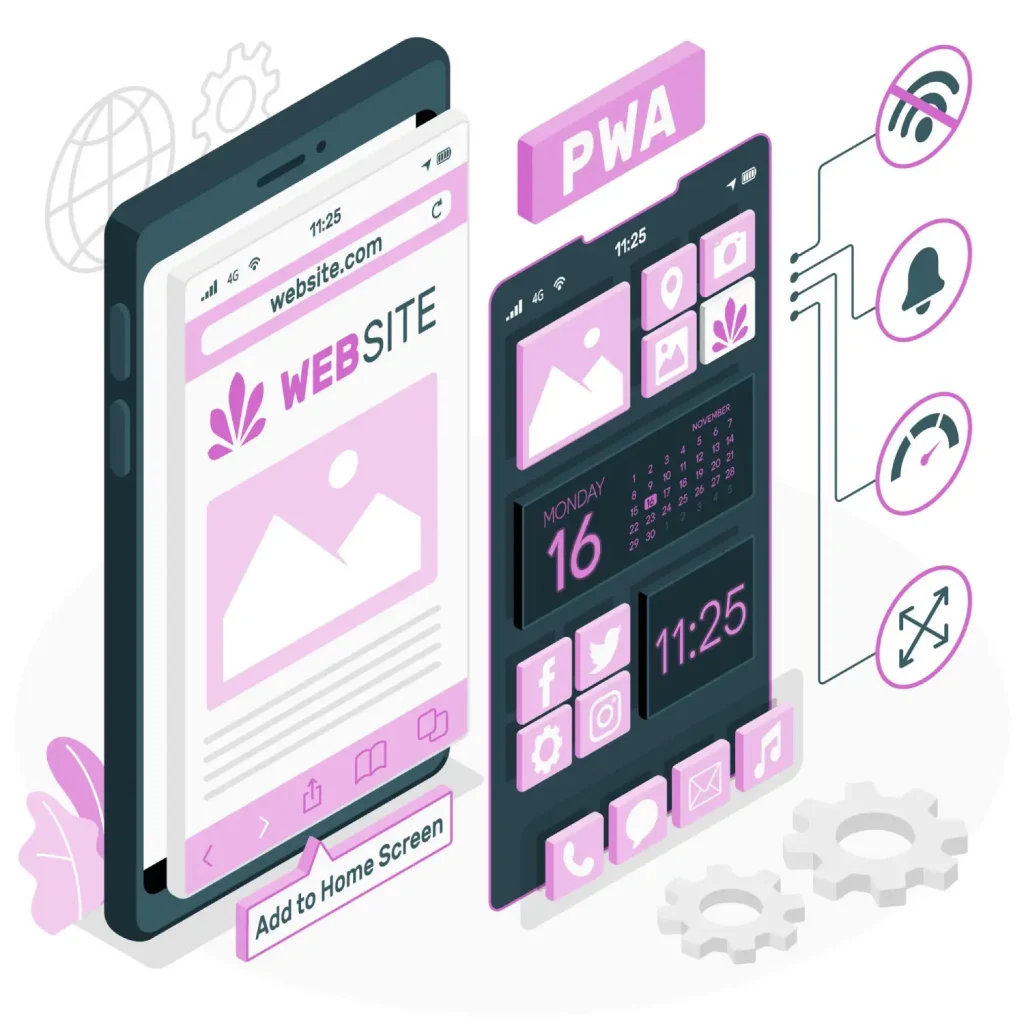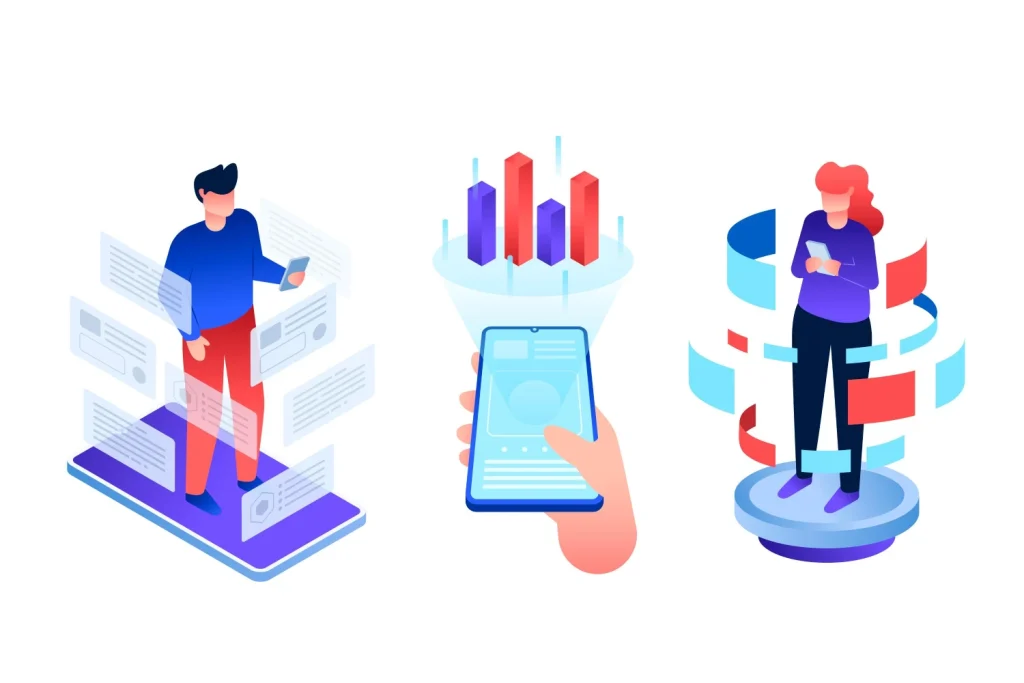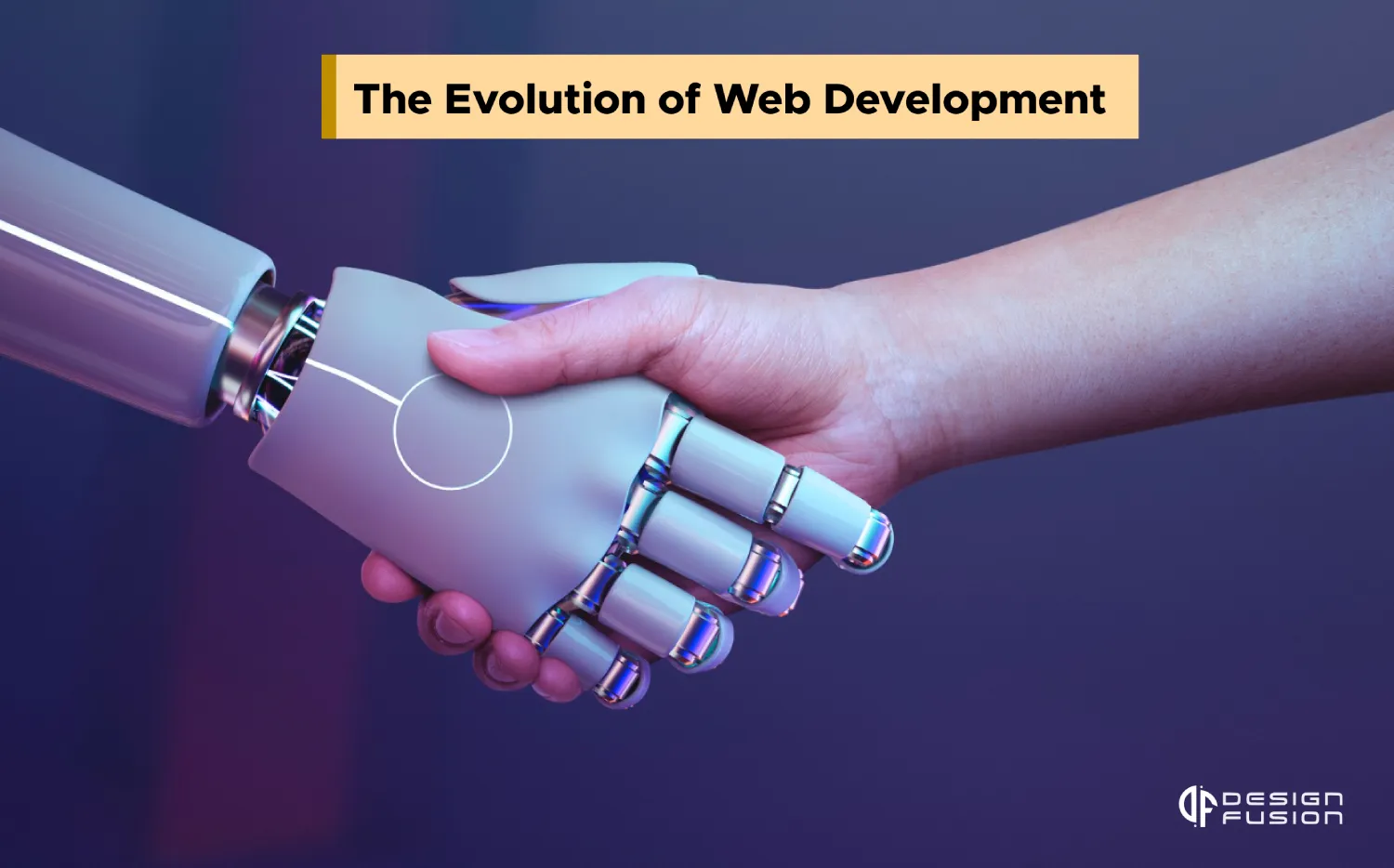In the ever-evolving landscape of web development, staying ahead of the curve is not just a choice—it’s a necessity. As we embark on this journey into the future, a myriad of emerging technologies promises to reshape the way we approach web development. In this exploration, we’ll delve into the promising trends that are set to redefine the very fabric of web development, with a special focus on the keyword that powers the digital realm: “web development.”
1. Machine Learning

the fusion of machine learning and web development stands as a pivotal turning point. This integration holds the promise of being a genuine game-changer, reshaping the digital landscape into a realm where websites dynamically adapt to user preferences, predict behavior, and offer truly personalized experiences. From real-time chatbots providing assistance to content recommendation systems elevating engagement, machine learning is not just a tool—it’s a revolutionary force transforming how we craft and tailor the very fabric of web experiences.
Dynamic Adaptation to User Preferences:
The integration of machine learning algorithms within web development heralds a new era where websites become adept at dynamically adapting to user preferences. Through continuous analysis of user interactions, machine learning models can discern patterns and tailor the content, layout, and functionalities to align seamlessly with individual preferences. This dynamic adaptation ensures that each user’s journey through the website is unique and personally tailored.
Predictive User Behavior:
Machine learning algorithms have the uncanny ability to predict user behavior with remarkable accuracy. By analyzing historical user data, these algorithms can identify trends, preferences, and patterns, allowing web developers to anticipate user actions before they occur. This predictive insight empowers websites to offer a proactive and anticipatory user experience, creating an environment where users find what they need before they even realize they’re looking for it.
Personalized Experiences Beyond Expectation:
Imagine a web experience where every click, every scroll, and every interaction shapes a personalized journey. Machine learning algorithms enable websites to understand users on a profound level, tailoring not just content but the entire user interface to align with individual preferences. From personalized product recommendations to adaptive navigation menus, the integration of machine learning goes beyond expectation, creating an immersive and individualized online experience.
Real-Time Chatbot Assistance:
The rise of machine learning-powered chatbots is transforming customer interactions on websites. These chatbots, armed with natural language processing capabilities, provide real-time assistance to users. Whether answering queries, guiding users through processes, or offering personalized recommendations, chatbots enhance the user experience by providing instant and intelligent support.
Content Recommendation Systems:
Machine learning algorithms excel at understanding user preferences in content consumption. Content recommendation systems leverage this capability to suggest articles, products, or media tailored to individual tastes. As users engage with the recommendations, the system continuously refines its understanding, ensuring that the content presented remains relevant and captivating.
Revolutionizing Engagement Strategies:
Machine learning is revolutionizing how web developers approach user engagement. By analyzing user behavior, preferences, and interactions, these algorithms enable the implementation of targeted engagement strategies. This may include personalized notifications, adaptive interfaces, or even gamification elements designed to captivate and retain user attention.
Shaping the Future of Web Development:
The integration of machine learning into web development is not a fleeting trend; it’s a transformative force shaping the future. As machine learning models become more sophisticated, the potential for creating hyper-personalized and intelligent web experiences becomes limitless. The future of web development is one where machine learning algorithms seamlessly collaborate with developers to craft experiences that not only meet but exceed user expectations.
2. WebAssembly (Wasm)
A groundbreaking force has emerged—WebAssembly, affectionately known as Wasm. Representing a binary instruction format, WebAssembly is a technological marvel that enables high-performance execution directly within web browsers. This revolutionary approach is unlocking a world of exciting possibilities for web developers, empowering them to construct intricate applications with speeds approaching that of native counterparts. From immersive gaming experiences to handling data-intensive applications, WebAssembly is shattering the performance barriers that have historically constrained the capabilities of web-based software.
High-Performance Execution:
At its core, WebAssembly is designed to deliver unparalleled performance. By offering a binary format that can be executed at near-native speeds, this technology transcends the traditional limitations of web-based applications. Web developers can now harness the capabilities of WebAssembly to ensure their applications not only meet but exceed user expectations for speed and responsiveness.
Complex Applications with Near-Native Speeds:
The advent of WebAssembly heralds a new era where web developers can construct highly intricate applications without compromising on performance. Whether it’s sophisticated graphics rendering, complex algorithms, or data-intensive computations, WebAssembly empowers developers to create applications that rival the speed and efficiency of those built for desktop environments.
Breaking Down Performance Barriers:
WebAssembly is on a mission to break down the performance barriers that have historically hindered the potential of web-based software. By introducing a low-level binary instruction format, this technology allows browsers to execute code at speeds that were once reserved for native applications. This not only elevates the user experience but also expands the scope of what is achievable within a web environment.
Gaming Experiences Redefined:
Perhaps one of the most exciting realms influenced by WebAssembly is gaming. Web developers can now create browser-based games with near-native performance, delivering immersive and graphically rich experiences. This shift eliminates the need for users to download large game files, opening up a new frontier for accessible and instantaneous gaming directly from the browser.
Handling Data-Intensive Applications:
The capabilities of WebAssembly extend beyond the gaming sphere to encompass data-intensive applications. From scientific simulations to multimedia processing, developers can leverage the speed and efficiency of WebAssembly to handle computationally intensive tasks seamlessly within the browser environment. This paves the way for a new breed of web applications capable of processing vast datasets with remarkable speed.
WebAssembly in Action:
As WebAssembly gains traction, real-world applications are showcasing its transformative impact. Platforms are leveraging this technology to enhance the speed of image processing, scientific computing, and even video editing—all within the confines of a web browser. This demonstrates the versatility of WebAssembly in addressing a wide array of performance-critical scenarios.
The Future Landscape:
WebAssembly’s influence is poised to extend further into the future, becoming an integral part of the web development landscape. Its ability to offer high-performance execution within browsers not only reshapes current application capabilities but also opens doors to innovations yet to be imagined. As more developers embrace WebAssembly, the digital realm is set to witness a wave of applications that redefine the boundaries of speed and performance.
3. Progressive Web Apps (PWAs)

A beacon of innovation has emerged—the Progressive Web App (PWA). Undeniably, the future of web development is intricately tied to the rise of PWAs, ushering in a paradigm shift that blurs the lines between traditional websites and mobile applications. PWAs promise users a seamless, app-like experience directly from their browsers, showcasing unprecedented speed, reliability, and the groundbreaking capability to operate offline. The adoption of PWAs by industry giants like Twitter and Pinterest marks a definitive trend, signaling a collective move towards creating immersive and engaging web experiences that transcend the boundaries of conventional online interaction.
Seamless Transition:
Progressive Web Apps epitomize a seamless transition between web and mobile environments. Unlike traditional websites, PWAs offer users the option to install the application directly from the browser onto their device’s home screen, eliminating the need for app store downloads. This seamless integration ensures that users can effortlessly access their favorite web applications with a single click, streamlining the user experience.
App-Like Experience:
The hallmark of PWAs lies in delivering an app-like experience without the need for installation. Through advanced web technologies like service workers and web app manifests, PWAs enable features such as push notifications, home screen icons, and full-screen experiences. This app-like immersion captivates users, fostering engagement levels typically associated with native mobile applications.
Speed and Reliability:
PWAs prioritize speed and reliability, offering near-instantaneous loading times and smooth, responsive interactions. Leveraging techniques like caching and pre-fetching, these applications ensure that users experience minimal latency, providing a level of performance that mirrors or even surpasses that of traditional native apps.
Offline Functionality:
A groundbreaking aspect of PWAs is their ability to operate seamlessly in offline mode. By caching essential resources during the initial visit, PWAs ensure that users can access critical functionalities, browse content, and interact with the application even when an internet connection is unavailable. This offline capability expands the reach of web applications to users in areas with limited connectivity.
Industry Endorsement:
The adoption of PWAs by industry leaders such as Twitter and Pinterest underscores the transformative power of this web development approach. These companies recognize the potential of PWAs to redefine user engagement, break down platform barriers, and offer a consistent, high-quality experience across devices.
Immersive and Engaging Experiences:
PWAs not only represent a technical evolution but also a shift towards creating immersive and engaging web experiences. By combining the best features of web and mobile applications, PWAs empower developers to craft interactive, visually compelling interfaces that captivate users and keep them coming back for more.
The Future Landscape:
As more companies embrace the PWA model, the future of web development is poised to be dominated by these versatile applications. PWAs provide a scalable and cost-effective solution for delivering high-quality, cross-platform experiences, making them a cornerstone of the evolving digital landscape.
4. Voice Search Optimization

The rise of virtual assistants and smart devices has paved the way for a transformative shift in search behaviour—enter the era of voice search. This technological wave has tasked web developers with a new mission: optimizing websites for voice queries. The focus is no longer solely on typed commands; rather, it extends to creating seamless conversational interfaces and harnessing the power of natural language processing (NLP). The future of the web promises an era where the spoken word is as influential as the typed command, ushering in a more accessible and user-friendly online experience.
Understanding the Voice Search Revolution:
The advent of virtual assistants like Siri, Google Assistant, and Alexa has introduced users to a more natural and convenient way of interacting with technology. Voice search allows users to speak their queries instead of typing them, and this shift has significant implications for web developers. Understanding the nuances of voice search and its impact on user behavior is the first step toward crafting a web experience that resonates with the evolving digital landscape.
Optimizing Websites for Conversational Interfaces:
Unlike traditional keyword-centric optimization, voice search demands a shift towards more conversational and context-aware interfaces. Web developers are now focusing on creating content that aligns with how people naturally speak. This involves incorporating long-tail keywords and understanding the intent behind user queries to deliver more accurate and relevant results. The goal is to make the interaction feel like a genuine conversation rather than a series of commands.
Embracing Natural Language Processing (NLP):
At the heart of voice search optimization is the integration of Natural Language Processing. This sophisticated technology enables machines to comprehend and interpret human language in a way that mimics human understanding. Web developers are leveraging NLP to refine search algorithms, ensuring that websites can grasp the intricacies of spoken language and deliver results that align with user intent. The result is a more intuitive and user-friendly web experience.
User-Centric Accessibility:
Voice search isn’t just a convenience—it’s a game-changer for accessibility. Web developers are recognizing the potential to make online information more accessible to individuals with disabilities or those who may struggle with traditional text-based interfaces. By prioritizing voice search optimization, websites become more inclusive, allowing a broader audience to navigate and interact with digital content effortlessly.
Future-proofing the Web Experience:
As the influence of voice search continues to grow, web developers must consider it a fundamental aspect of their toolkit. Future-proofing web development involves staying ahead of the curve, anticipating user needs, and adapting to the evolving ways people interact with technology. Voice search is not a passing trend; it’s a paradigm shift that will shape the future of the web.
4. Augmented Reality (AR) and Virtual Reality (VR)

One of the most exciting frontiers is the integration of Augmented Reality (AR) and Virtual Reality (VR) technologies. As these technologies mature, web developers are at the forefront of exploring innovative ways to seamlessly weave immersive experiences into the digital fabric. The implications are vast, ranging from transforming e-commerce with virtual showrooms to revolutionizing the way we interact with cultural and educational content through interactive museum exhibits.
Virtual Showrooms for E-Commerce:
Imagine a world where you can try on clothes, test out furniture, or even experience the ambiance of a home before making a purchase—all from the comfort of your living room. Web developers are actively working on creating virtual showrooms that leverage AR and VR to provide users with immersive shopping experiences. By superimposing virtual items onto the real world through AR or by transporting users to a simulated environment with VR, these virtual showrooms redefine the online shopping landscape, offering a level of interactivity and engagement previously unimaginable.
Interactive Museum Exhibits:
The marriage of web development and AR/VR technologies has the potential to transform the way we engage with art, history, and education. Web developers are collaborating with museums and cultural institutions to create interactive exhibits that transcend physical boundaries. Visitors can don AR glasses or VR headsets to step into historical moments, explore ancient civilizations, or even interact with lifelike representations of artworks. This not only enhances the educational aspect but also provides a dynamic and engaging experience that appeals to a broader audience.
Enhancing Real Estate Exploration:
For the real estate industry, AR and VR are becoming powerful tools for showcasing properties in a fully immersive manner. Web developers are crafting virtual tours that allow prospective buyers to explore homes or commercial spaces remotely. Through VR, users can “walk through” a property, getting a sense of its layout and features as if they were physically present. This not only saves time but also opens up new possibilities for reaching global audiences interested in real estate investment.
Training Simulations and Skill Development:
In the realm of education and professional training, AR and VR technologies offer a revolutionary approach. Web developers are creating realistic simulations that enable users to practice skills in a risk-free virtual environment. Whether it’s medical professionals honing their surgical techniques or pilots undergoing flight simulations, the integration of AR and VR into web development provides a hands-on and immersive learning experience.
Virtual Events and Conferences:
With the rise of remote work and digital connectivity, virtual events and conferences are becoming increasingly popular. Web developers are harnessing AR and VR to elevate these virtual gatherings, offering attendees the sensation of being physically present. From virtual trade show booths to interactive conference sessions, the integration of these technologies enhances the overall experience, fostering a sense of connection and engagement.
Conclusion
In the kaleidoscope of emerging technologies, the future of web development gleams with infinite possibilities. Machine learning, WebAssembly, Progressive Web Apps, voice search optimization, and AR/VR are just the tip of the iceberg. As we ride the wave of innovation, web developers must not merely adapt but embrace these trends to craft the next generation of digital experiences. The journey into the future of web development is an exhilarating one, and the keyword that guides us through this odyssey remains constant: “web development.” In the coming years, let’s anticipate, adapt, and create the web of tomorrow—one line of code at a time.


